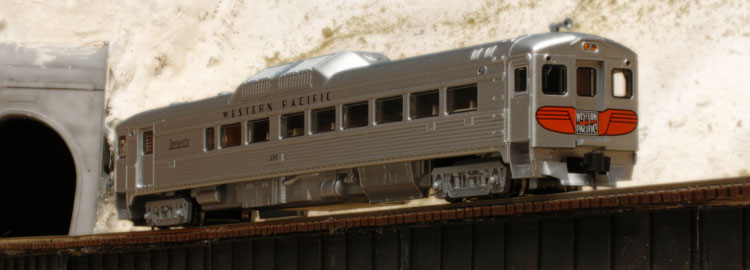
Installation Instructions:
The DN143K2 cannot be tested prior to installation in the rail diesel car.
1. Carefully remove the shell from the RDC. Carefully remove the plastic casting from the bottom side of the RDC frame, using a flat bladed screwdriver to pry it loose.
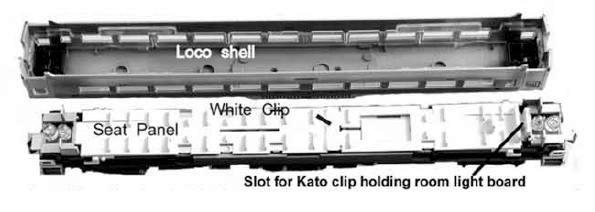
2. Gently remove the white clip that holds the seat panel in place. Remove the seat panel by pushing up gently from the bottom of the frame. The seat panel has clips underneath that are very easy to break, so be careful.
3. Take extra care to notice how the RDC comes apart so that you will be able to re-assemble it properly. Kato has a web page which details the disassembly and assembly of their RDC's, here.
4. Remove the lamp boards at each end of the RDC.
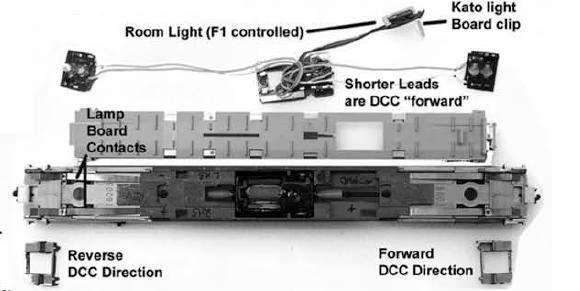
When the DN143K2 decoder is installed as shown in the above illustration, the lights will operate golden yellow in the forward end and red at the rear end of the RDC when the unit is running forward.
The lights will automatically change when the RDC is reversed.
5. Remove the white plastic plug from the frame to make room for the decoder. Pass the lamp boards on the decoder through the hole in the seat panel, positioning the decoder as shown:
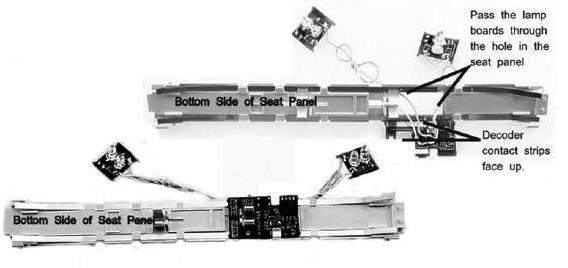
The decoder side with wires should face towards the seat panel assembly; the decoder side with electrical contact strips should face up through the opening.
This arrangement allows the decoder to be retained between the seat panel and the frame of the RDC when the seat panel is reinstalled.
6. Carefully reinstall the seat panel, making sure that all brass contacts are in their original position.
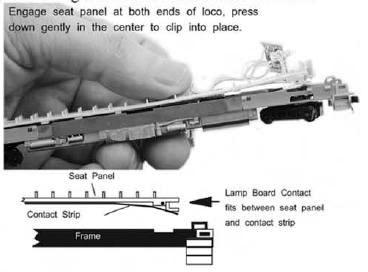
[Note: The bottom of the seat panel has two conducting strips which run the length of the car. The DN143K2 decoder has conducting surfaces which press up against these two strips, providing power to the decoder. At each end, these strips press against the track pick up contacts in each truck.]:

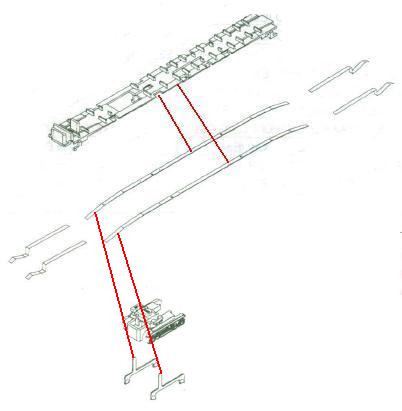
[The lamp board contacts at each end are fitted between the seat panel and the contact strips. It is important to fit the four lamp board contacts properly into the seat bottom conducting strips. Match the holes in the lamp board contacts to the pins on the frame for the correct fit.] [Note: It seems easiest to first attach the seat panel to the frame, and then place the lamp board contacts at one end, clipping that end into place. The procedure is repeated at the other end., Ed.] [Here, a photo from the Kato site showing the connections]:
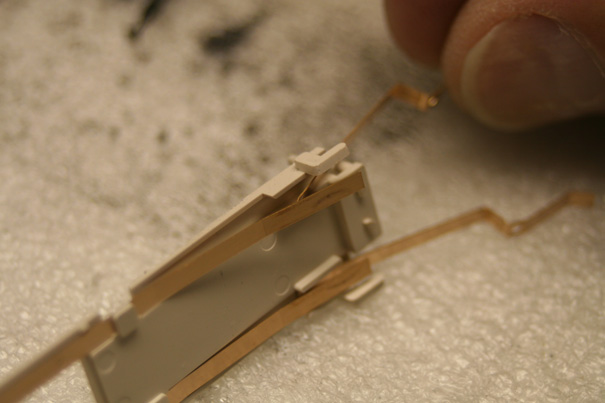
If the seat panel was damaged during installation and you are not able to secure it back into the frame, you can use tape to hold it securely in place.
Proper decoder operation depends upon the seat panel assembly holding the decoder against the brass contacts.
7. Remove the lamp boards from the plastic clips, as shown here:
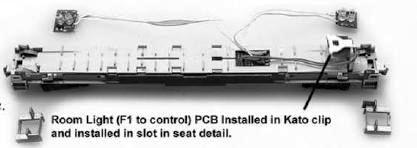
8. Modify the lamp board clips by cutting notches for the wires from the decoder, as shown here:

You can do this with small diagonal cutters or with a hobby knife.
[Note: The lamp clip boards are small and can be easily broken if this procedure is not done carefully. It may be easier to drill two small holes in the back of the clip, and then enlargen the hole into a slot for the wires. Ed.]
9. Insert the DN143K2 decoder's lamp boards into the modified plastic clips and reinsert the clips into the RDC.
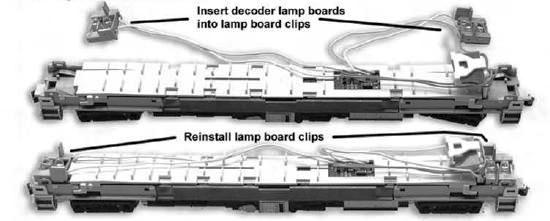
10. Test the decoder for proper operation. Once the test is completed, replace the RDC shell.
Concerning replacing the shell, this from the Kato, USA site: The cooling blister on top of the roof is off to one side of center. The short end is considered the front end (this does not apply to the RDC-4) Look at the rear end of the cooling blister, then let your sight drop straight down. At this point on the under-carriage detail piece, is a belt guard. One can always orient the shell to the chassis with this detail. Note that this cover is only on one side of the RDC so you may need to rotate it to find it.
The Kato site includes additional maintenance and prototype information about their RDC's, located here.
These pages include an assembly diagram and a parts list.